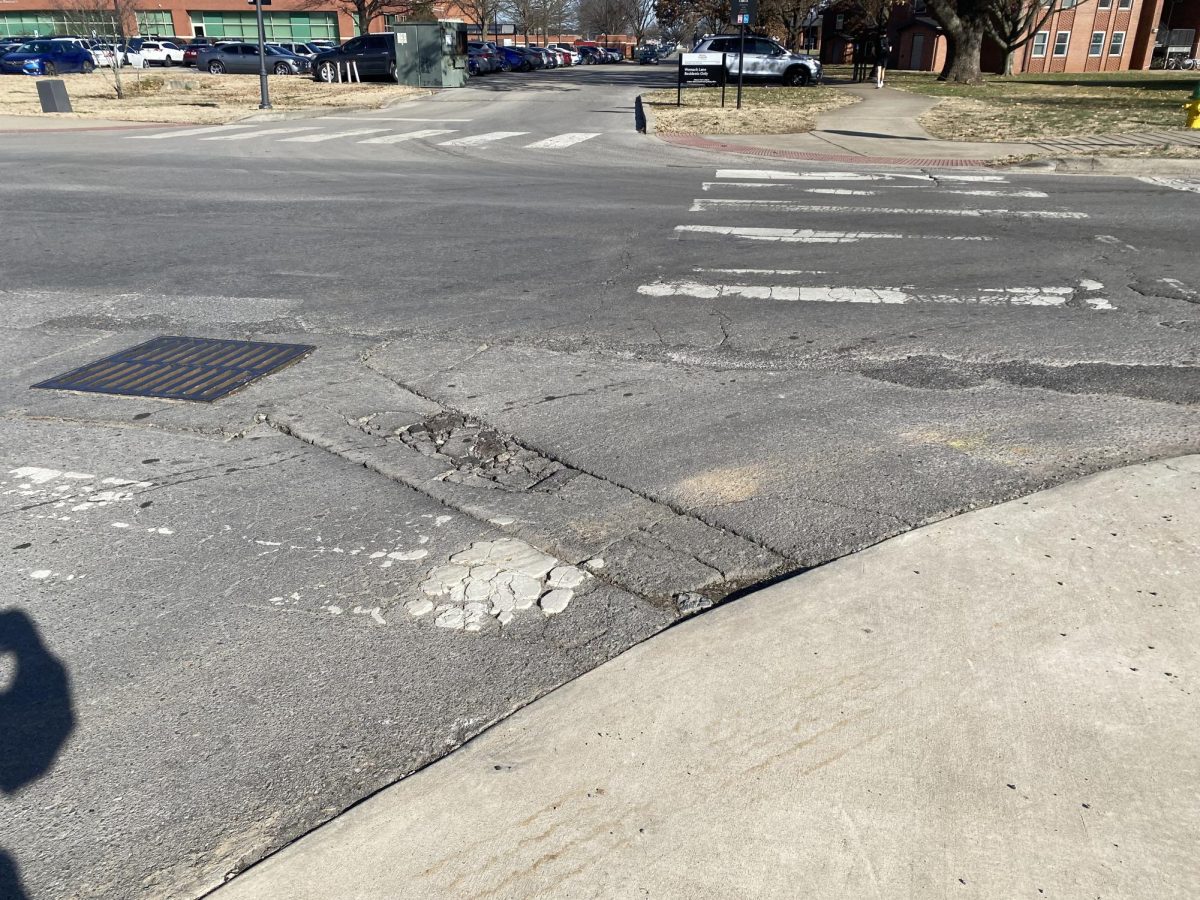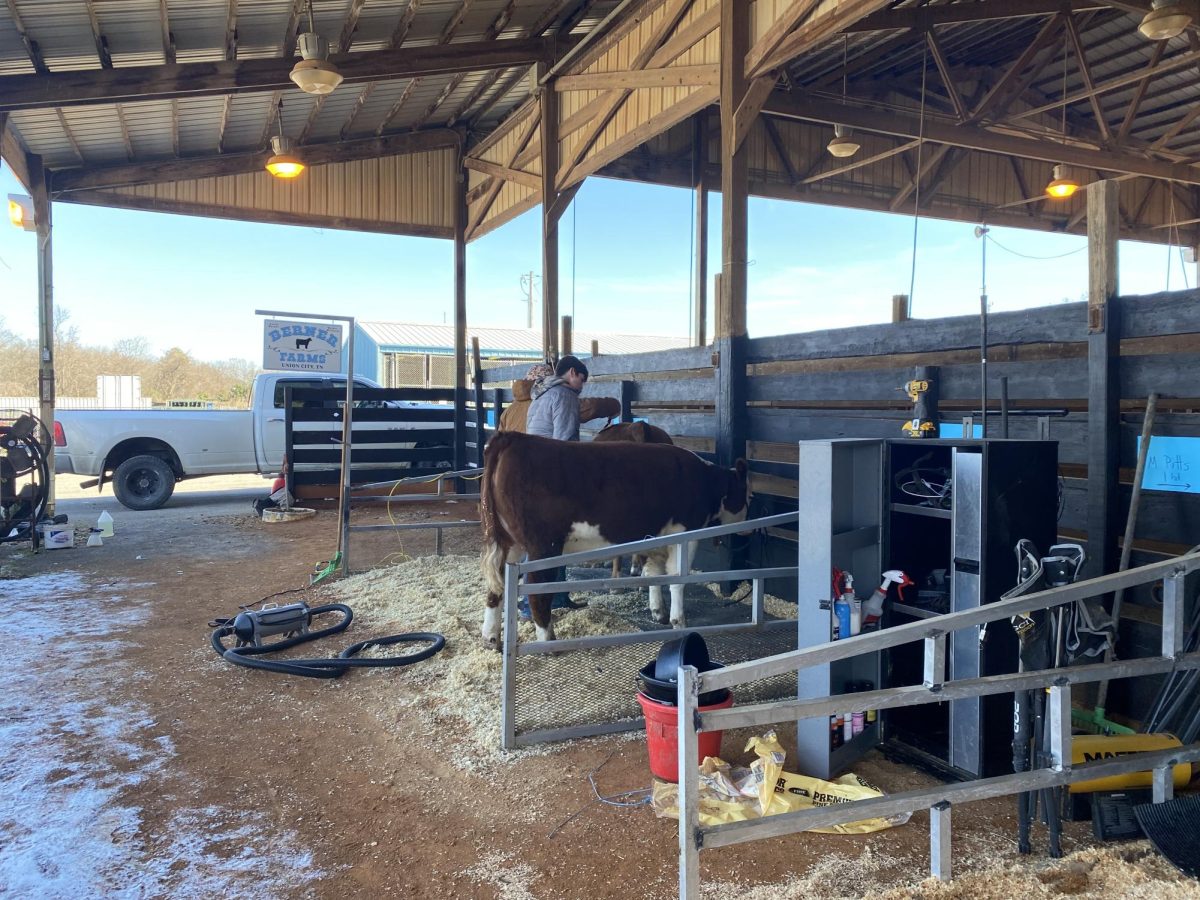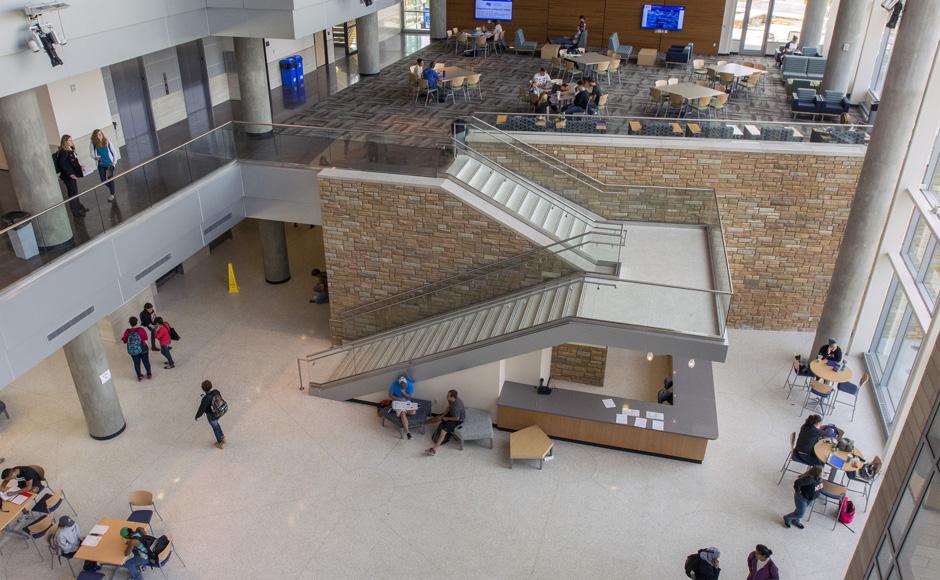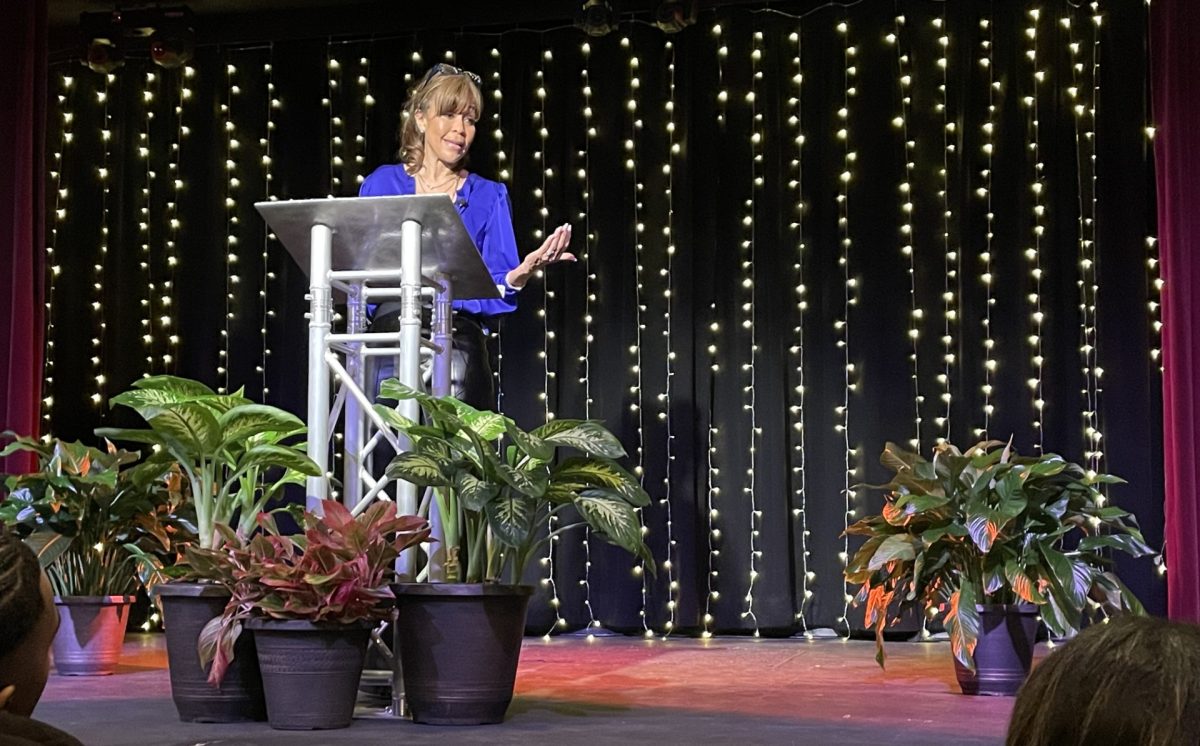Photo by Caleb Revill / MTSU Sidelines
Anthropologist Glenn Shepard and archaeologist Helena Lima presented lectures on their research about the indigenous peoples of Amazonas, Brazil in the College of Education auditorium on Tuesday.
Both Shepard and Lima work at the Museu Paraense Emílio Goeldi, a museum in the Brazilian city of Belém. The museum acts as a research institution for archaeology, paleontology, anthropology and other sciences.
Shepard spoke about the Kayapo tribe, which is native to the eastern Amazon. With him was Kra Krax, a Kayapo filmmaker.
In 2011, Shepard worked with the Kayapo tribe to produce “Miss Kayapo,” one of the first films recorded by that particular group of the Kayapo people. The film was focused on a beauty contest for Kayapo women and was shot entirely by a tribesman who had never used a camera before.
Shepard noted the shock that people may have when seeing this film.
“When you see this as an anthropologist and you show it to people, the first reaction is ‘this is a perversion of traditional indigenous culture and beauty concepts,’” Shepard said. “What (the filmmaker) said was, ‘No. We get to show Kayapo girls as beautiful, as Indians and as Brazilians at the same time … We get to show Kayapo beauty to the white people in a way that they understand.’”
Another early Kayapo film that Krax worked on was about a naming ceremony that his tribe put together.
“Kayapo have many, many names, and they get names in different ceremonies from different elder family members,” Shepard said.
Shepard explained some of the history surrounding indigenous peoples and filmmaking.
“In the 1970s, there was a project (where) Sol Worth and John Adair gave 16mm cameras to Navajo people and have them make their own films,” Shepard said. “The Kayapo are interesting in this regard because they were one of the first indigenous peoples from South America to take on video cameras in the late 1980s.”
The Kayapo initially used filmmaking as a form of activism. Shepard said that Kayapo films were made to organize a protest against the construction of the controversial Belo Monte dam project in 1989.
“What the Kayapo did (was) they took cameras, and they visited other dams that had already been in existence in Brazil,” Shepard said. “They filmed the dams and then showed the films to their villages.”
After seeing the potential damage that could come to their land, the Kayapo tribes throughout the territory organized an international protest movement. The dam’s construction was halted until 2011, when permits were granted for its continued construction. It was completed and operational in 2016.
Toward the end of his lecture, Shepard showed one of Krax’s films on a Kayapo ceremony. He then opened the discussion for members of the audience to ask Krax questions, which Shepard would translate.
One question was asked about whether or not the paint that the Kayapo wore in the films was only for ceremonial use.
“Everyone gets painted up for the ceremonies,” Krax said. “It’s not just for festivals, but for festivals, you have to have it.”
When asked about his favorite part of filmmaking, Krax said that he likes the parties, the tradition and his culture. He said that those reasons are why he continues to film.
Krax was asked if he saw his films as more journalistic or more of an artform.
“It’s art, like body paint is art,” Krax said. “Culture is art. Beadwork is art. So, it’s an art.”
Lima spoke during the second half of the lecture. She has worked for 20 years in the Amazon as an archaeologist and has a passion for studying ceramics in the region.
Lima explained that there is a notion that the Amazon is a “virgin forest,” waiting to be colonized. She said that people have lived there long before colonization and that certain parts of the Amazon forest resulted from indigenous environmental management.
“Archaeology shows that there were people living in the Amazon for 11,000 to 13,000 years,” Lima said.
Lima talked about the archaeological findings in Amazonia of anthropogenic soils, which are also known as “human soils.” These soils provide evidence that they were changed by human activity in the region where they are present.
Lima explained that, although they were not monumental, indigenous people did leave a mark on the history of the area.
“They were building with earth,” Lima said.
Lima said that some of the ceramics discovered in the region were designed as burial urns, which would be stowed in caves as cemeteries.
In 2013, Lima began work on the Origens, Cultura e Ambiente research project, a research initiative involving continued excavation and digging. The researchers involved in the project began work around the lower Xingu river in Brazil. There are now 32 research sites in the Caxiuana Forest in Brazil and 59 in Gurupa, a Brazilian municipality.
“Five years ago, (Gurupa) was a blank space on the map,” Lima said.
Through the OCA project, Lima and others have drawn connections between the ceramics of the Xingu river, all the way up to the Caribbean.
Lima also mentioned her partnership with MTSU’s department of sociology and anthropology and the MTSU Archaeological Field School. Through this program, students can apply to go to the Amazon for a summer course and get first-hand experience on archaeological digs and foreign culture.
To contact News Editor Andrew Wigdor, email [email protected].
For more news, follow us at www.mtsusidelines.com, on Facebook at MTSU Sidelines and on Twitter at @Sidelines_News.








